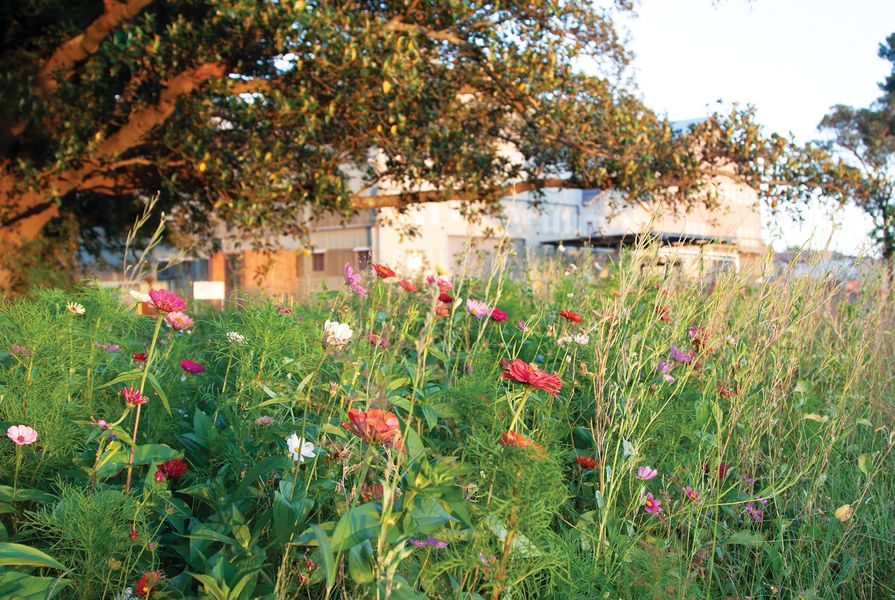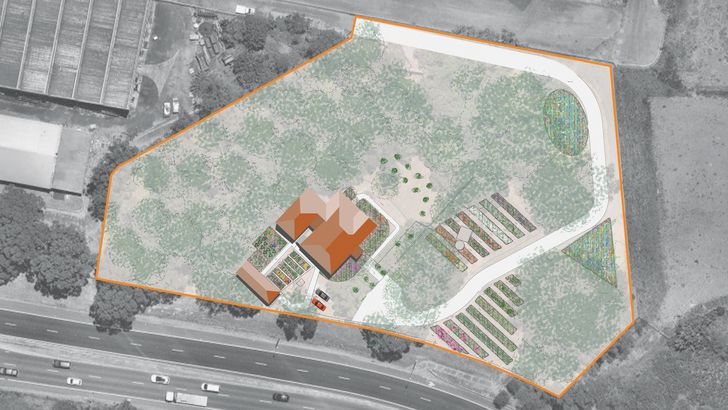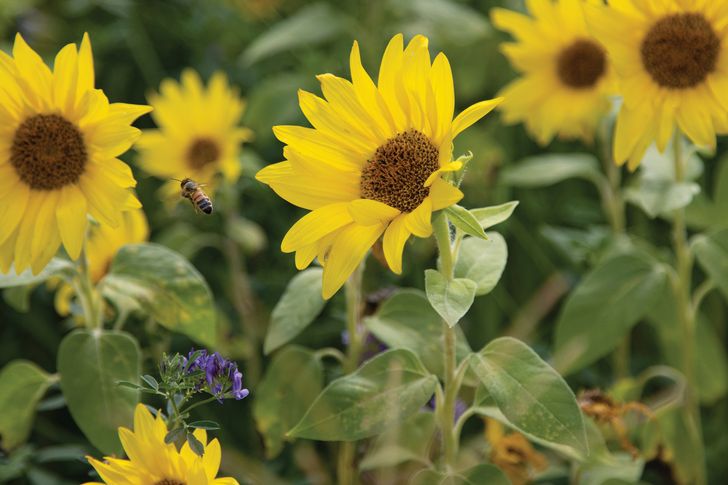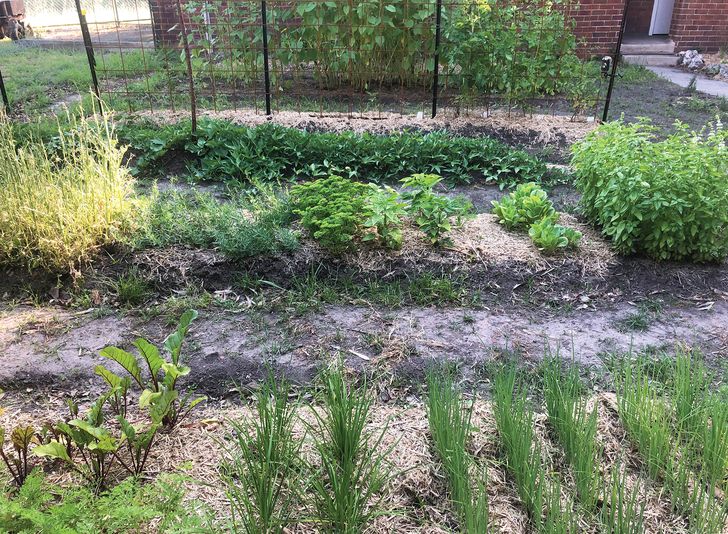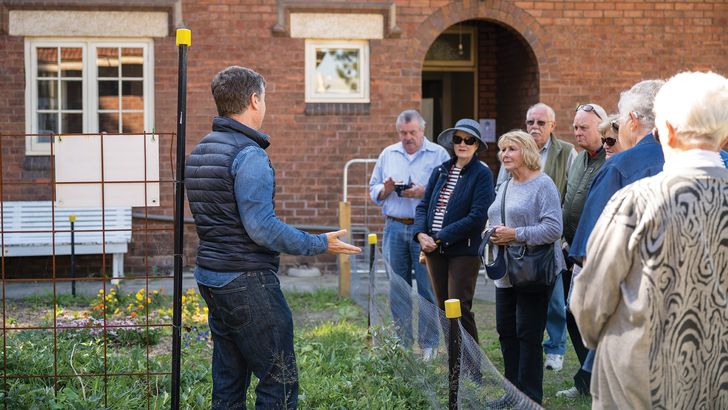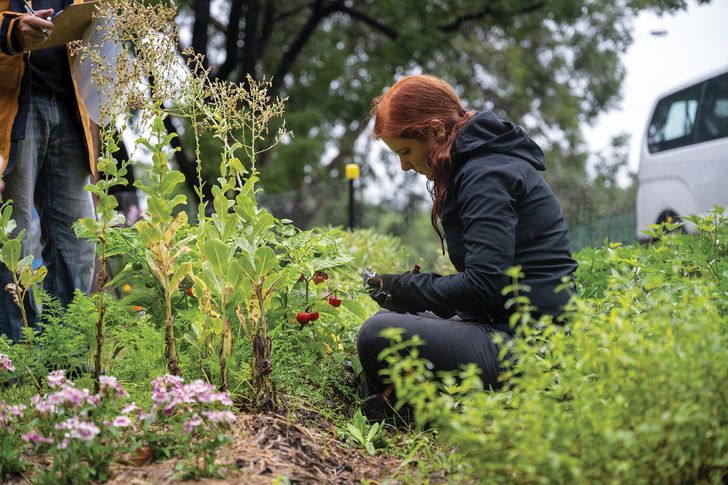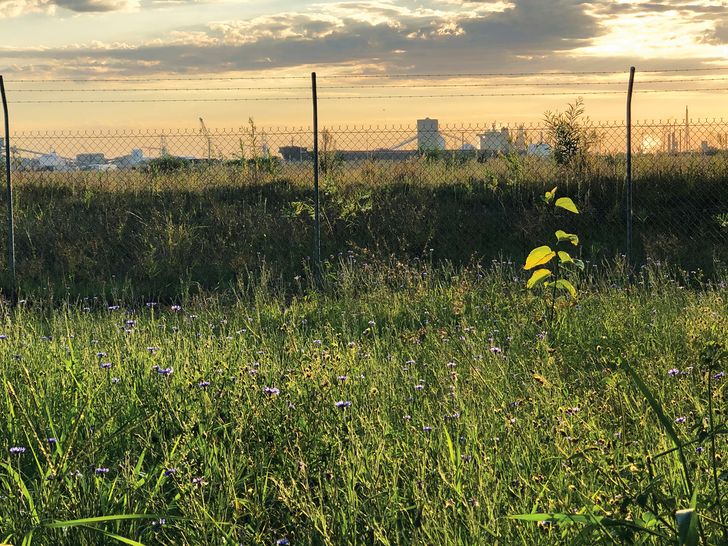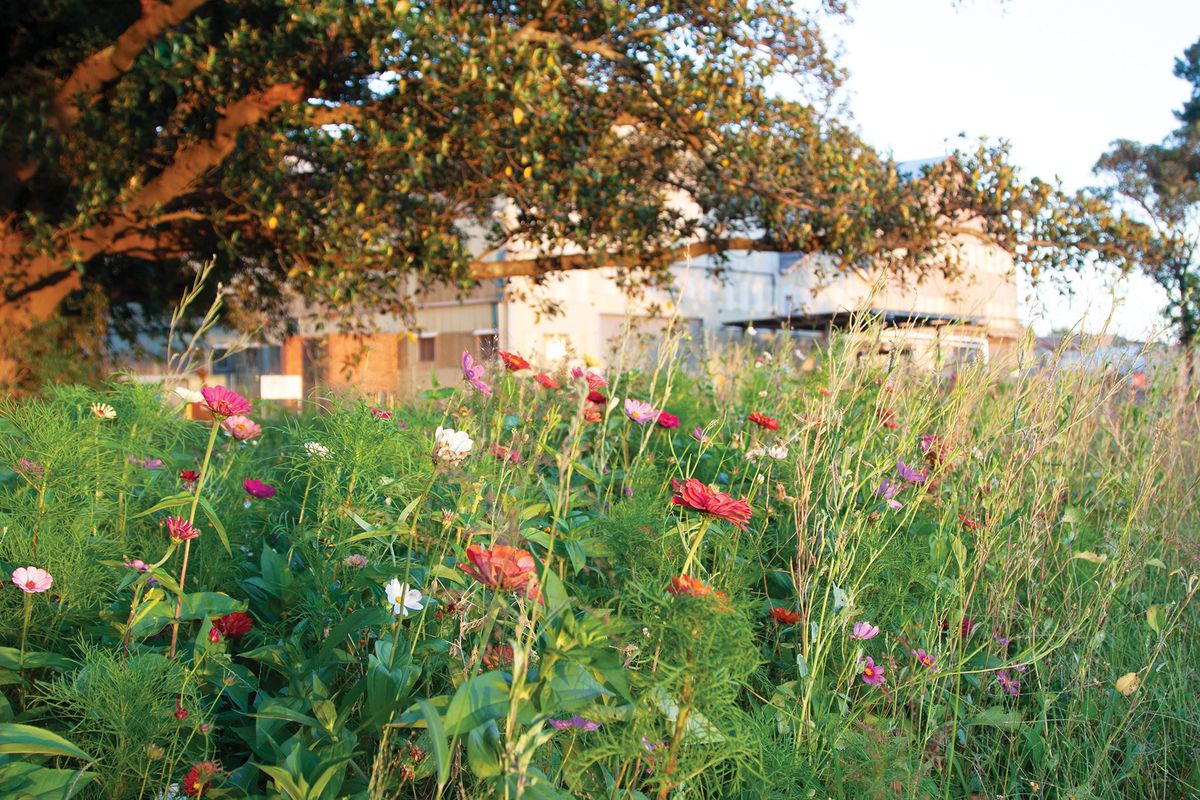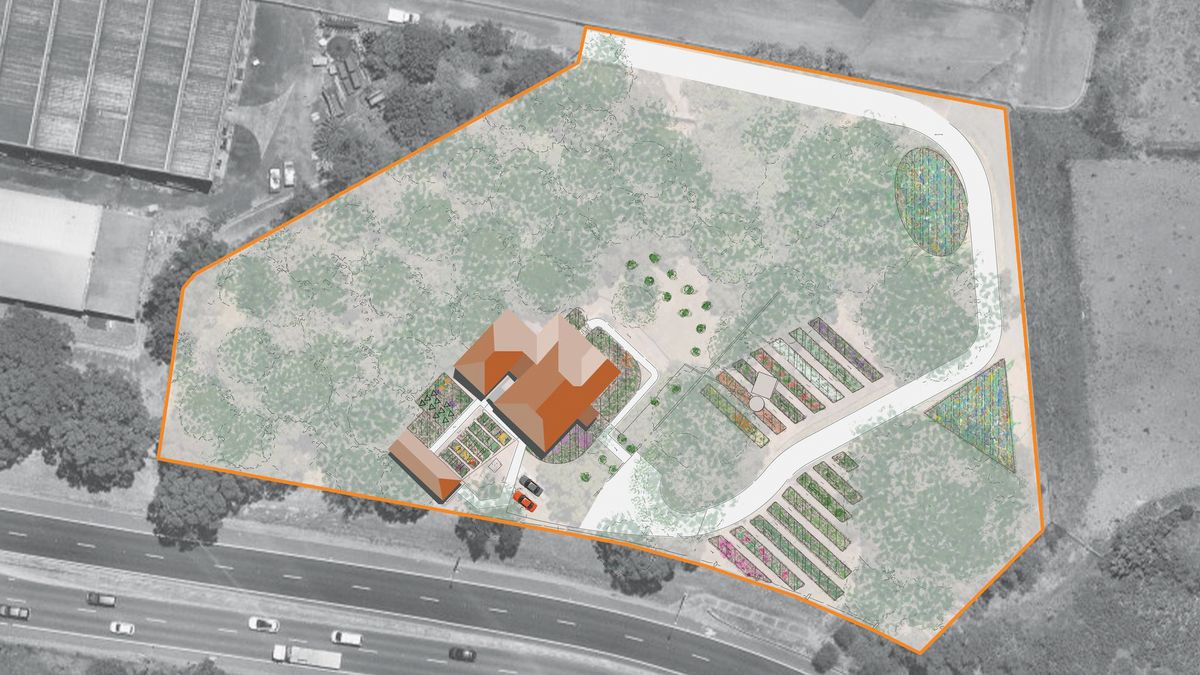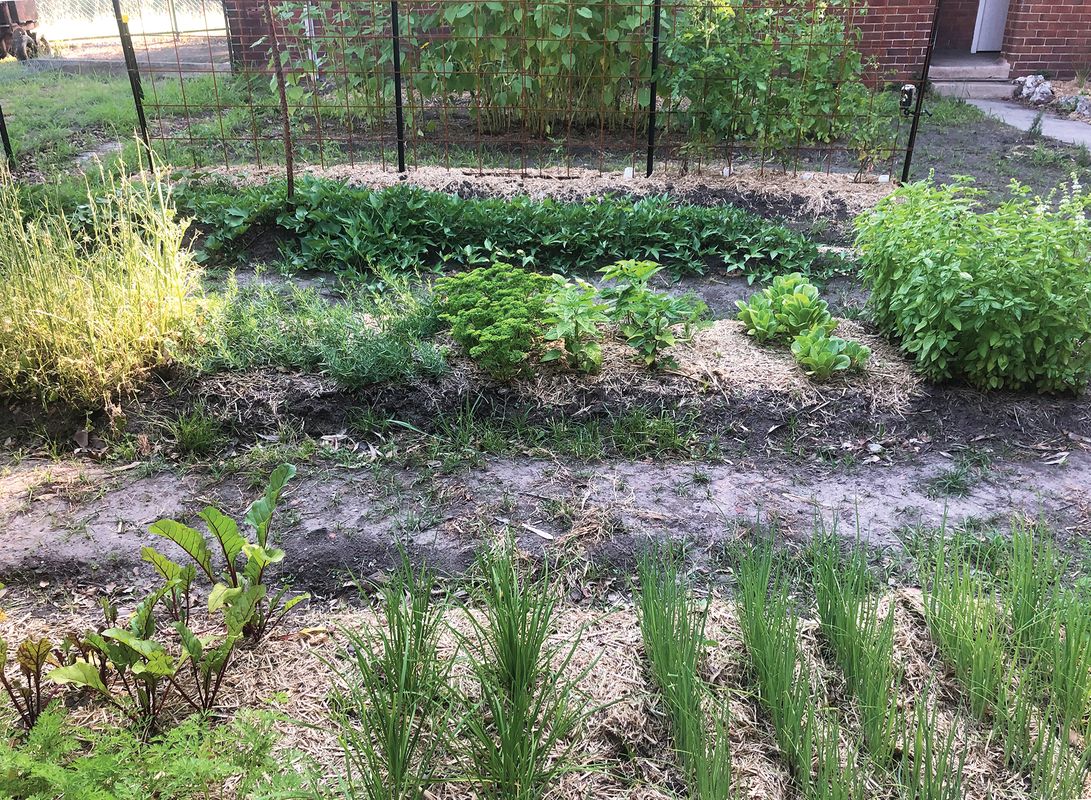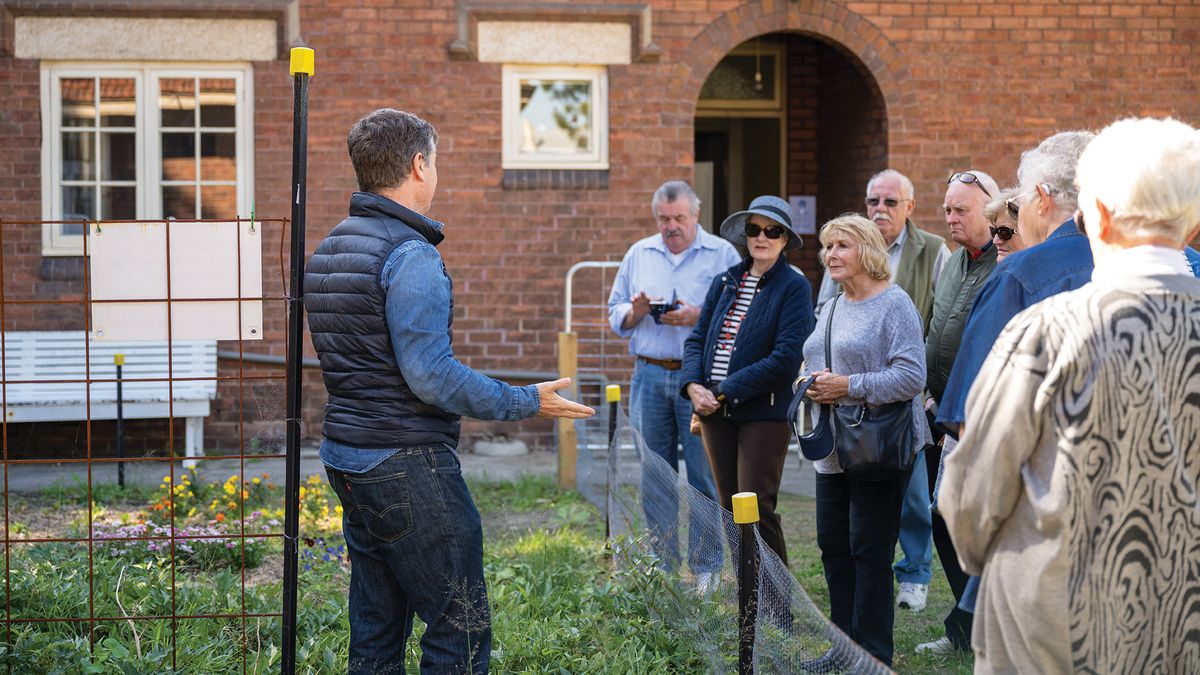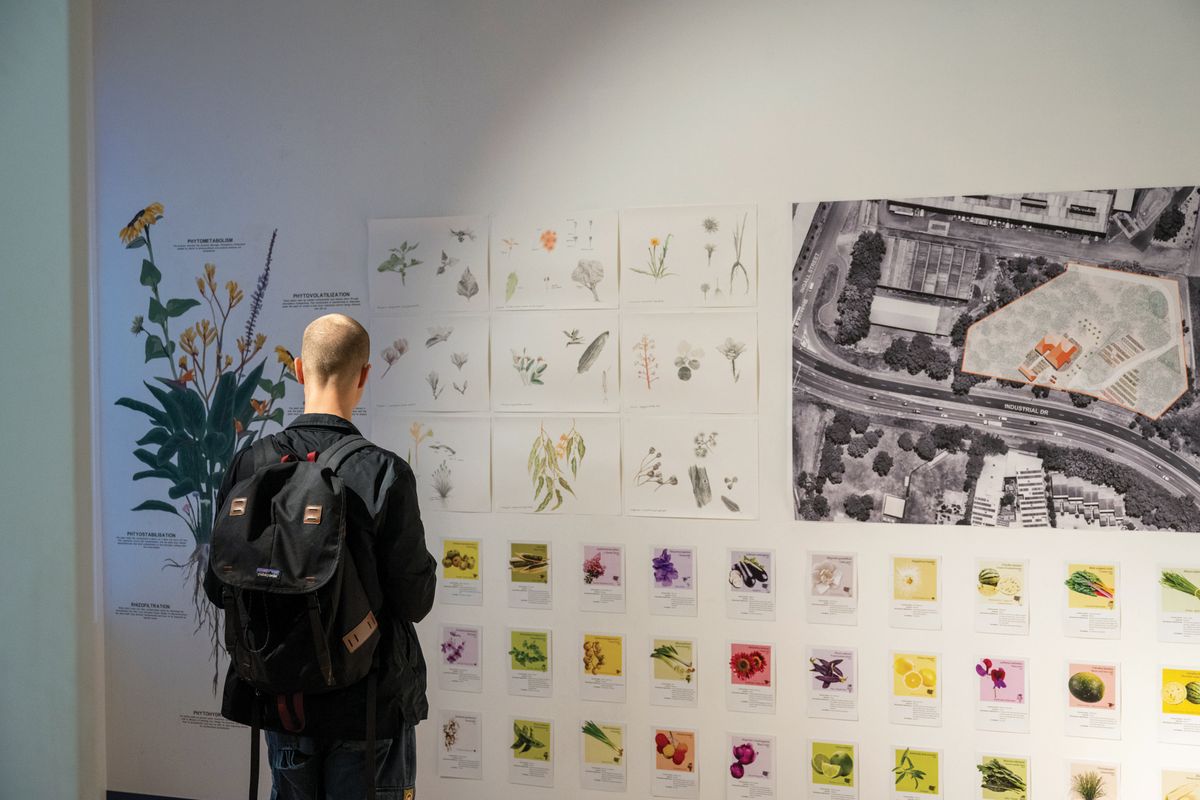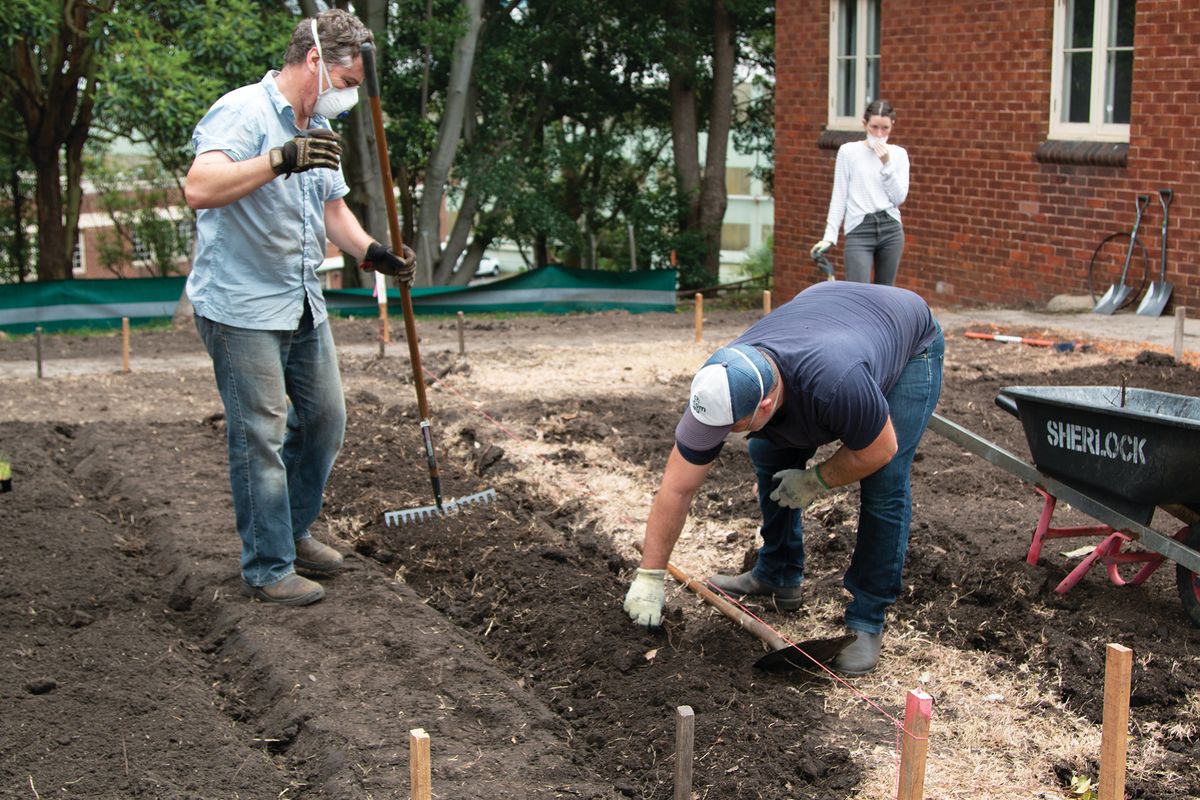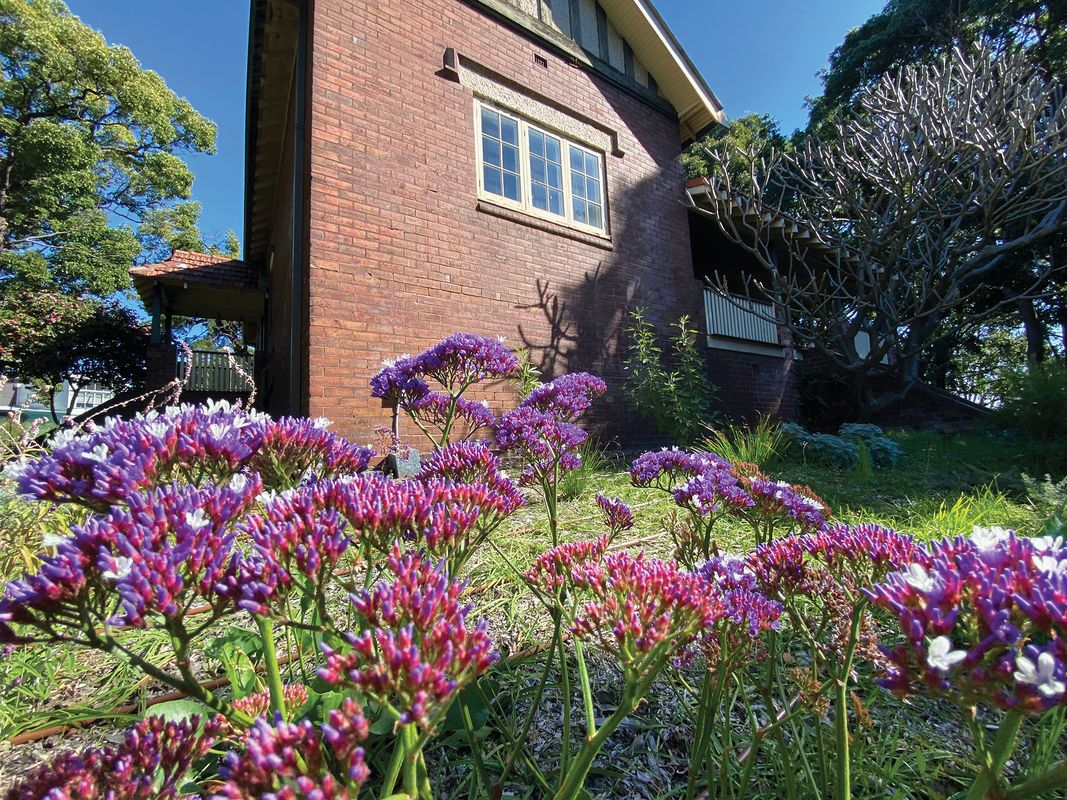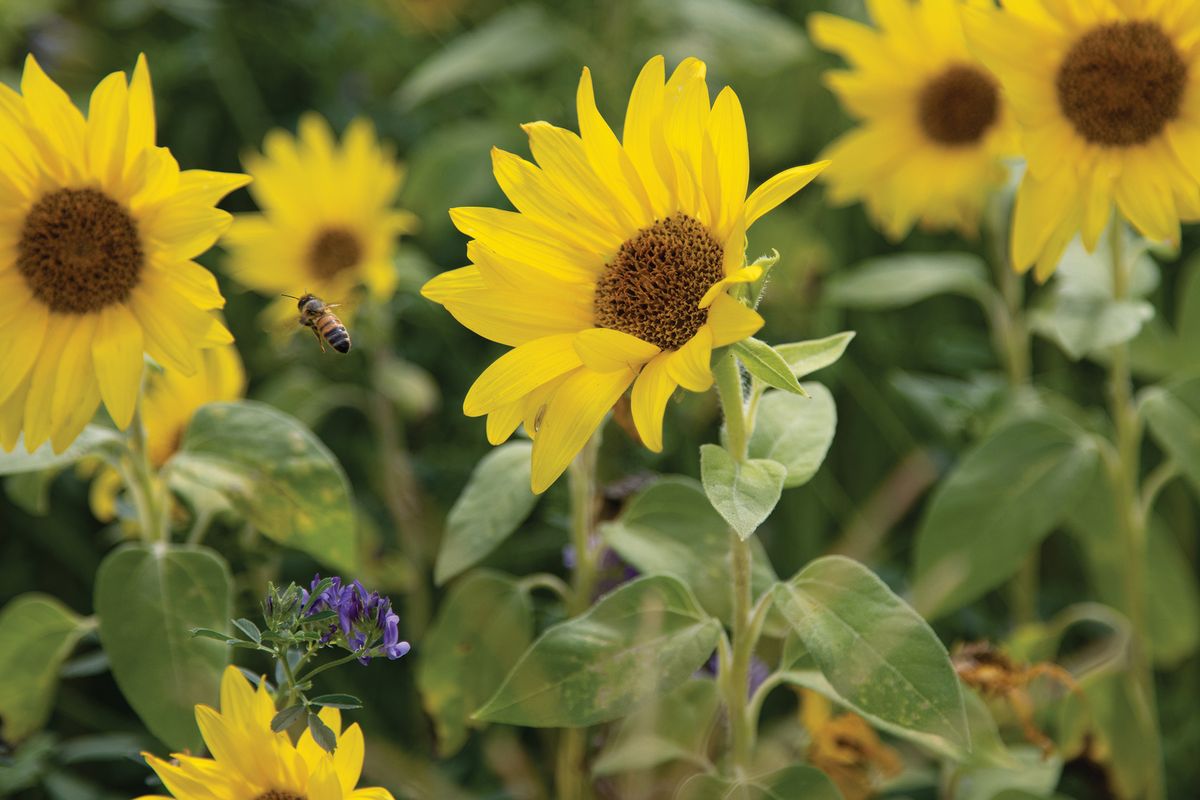In a beautiful image of the circularity of intellectual insight and material processes, science writer Dorion Sagan writes of how, in hearing his own breathing, he is reminded of the redox gradient, the metabolic source of energy for most animals. The oxygen we inhale and the chemical compounds making up our food are what sustain us in the very physical process that enables our awareness of those same processes and of our own existence. Redox gradients also exist in the biogeochemical processes of wetlands and soils, and also in contaminant plumes. The physics and chemistry are indifferent to values; but our own capacity for perceiving the difference between environments that nourish us and those that do the opposite is nonetheless crucial.
Delprat Phytoremediation Garden, an open-ended and ongoing experimental phytoremediation landscape in the grounds of the former Newcastle BHP steelworks manager’s cottage, is an effort to create just this sort of awareness. Conceived by SueAnne Ware at the University of Newcastle and Chris Johnstone of Bosque Landscape Architecture, and supported by PhD candidates and student research assistants, the project is an effort to study the effect of various phytoremediation plantings in the heavily contaminated grounds of the cottage.
Site plan of Delprat Phytoremediation Garden. The garden comprises five distinct zones: a flowering meadow, a cottage garden, a kitchen garden, an orchard grove, and zones of bounded shrubs.
Image: University of Newcastle – School of Architecture and Built Environment and University of Technology Sydney in collaboration with Landcom
Pollinators and other animals can carry out contaminants through ingesting or other methods.
Image: Miranda Cunningham
The potential for landscape architecture to restore post-industrial and polluted landscapes has been a prominent feature of the profession’s claims over the past several decades. This was recently underlined by last year’s award of the Oberlander Prize (landscape architecture’s answer to the Pritzker) to D.I.R.T. Studio’s Julie Bargmann, whose transformation of abandoned Appalachian slag heaps into gardens at Vintondale Reclamation Park was a touchstone for many post-industrial projects from the nineties onwards. Kate Kennen and Niall Kirkwood’s 2015 book Phyto is also an effort to map the state of research into phytotechnologies, especially in North America, and explore their potential for landscape design. And yet, as Ware and Johnstone point out, there are still very few concrete and comprehensive studies of the performance of particular plant species in contaminated sites in Australia, especially when it comes to native plantings. The work at the Delprat Garden is primarily an effort to redress this paucity of knowledge.
The garden comprises five distinct zones: a flowering meadow, which flanks the approach; a cottage garden, which surrounds the building itself; a kitchen garden, which, with the instantly recognizable forms of its domestic cultivars, also serves as a welcoming marker of arrival; an orchard grove; and zones of bounded shrubs that complete the overall design. Each of these areas references the layered history of the site, while modelling the kinds of exotic and native plantings one might commonly find in suburban Australian gardens. Environmental monitoring of the plantings and their surrounding soils is being provided through a collaboration with Megan Murray, leader of the Phyto Lab at the University of Technology Sydney (UTS).
Silverbeet, rosemary, basil, parsley and onion are among the diverse mix of edibles being tested.
Image: SueAnne Ware
Delprat Garden aims to create an awareness of the potential for landscape architecture to restore polluted soils.
Image: Jedd Cranfield
Crucial to Ware and Johnstone’s vision is a realistic approach to the capacities and limitations of the plants themselves, and the evolving state of scientific knowledge about how they respond to different types and concentrations of contamination. Some plants, for instance, are hyperaccumulators and extract large amounts of contaminants out of the soil, absorbing them into their own structures (famously, sunflowers – Helianthus annus), while others seem to successfully repel contaminants and are able to produce flowers and fruits that are largely untainted, despite the toxic conditions in which they grew (for example, watermelons – Citrullus lantanus). Given that pollinators, birds and other animals can potentially carry out these contaminants through ingesting or other methods, the ramifications of such research and knowledge, and its potential to shape a more ecological approach to planting design, are significant.
One of the goals of the project is to provide accessible guidance and performance data for everyday gardens, not just large-scale phytoremediation projects (Ware and Johnstone also previously collaborated with Murray, as well as UTS’s Penny Allan and Martin Bryant, on another experimental phytoremediation project on the former White Bay Power Station site in Sydney’s Rozelle). The toxic brew that was carried by wind and through the groundwater into the soils of Delprat Cottage also continues to afflict a much larger area of suburban Newcastle.
The project is supported by a website presenting the work of the garden in a style readily accessible to the general public, as well as a program that embeds its learnings through public educational and cultural events (although somewhat disrupted by the pandemic over the past two years). Another strength of the project is the attention paid to the pre- and post-colonial history of the site. Ware and Johnstone have conceived of the project as part of a lineage of hands-on creative-making that has characterized this place across the years: as an ancient stone-tool-making “factory” for local Aboriginal peoples, and as a site for the kinds of informal working-class fabrication practices that exist within the larger superstructure of massive industrial operations (the Newcastle Industrial Heritage Association, staffed by former steelworks employees, is housed in the cottage itself).
One of the project’s goals is to provide accessible guidance for the everyday garden.
Image: Jedd Cranfield
A meadow of purple coneflower set against the area’s industrial background glints in the afternoon sun.
Image: SueAnne Ware
From the front lawn of the garden, one can look out over the vast field of thin grassland that precariously clings to the contamination cap of the now largely empty steelworks site. Beneath the earth, a barrier wall extends 1.4 kilometres long and 45 metres deep, quarantining the steelworks’ soils. From this vantage point, the BHP manager once surveyed the belching, roaring structures of one of the largest industrial sites in Australia. In its intentionally low-key and deliberately ordinary way, the Delprat Garden offers a radically contrasting prospect of remaking the land.
Plant list (abridged)
Kitchen garden herbs: Ocimum basilicum (sweet basil), Allium tuberosum (garlic chives), Cymbopogon citratus (lemon grass), Anethum graveolens (dill), Mentha spicata ssp. spicata (common mint), Origanum vulgare ssp. hirtum (oregano), Petroselinum crispum (parsley), Salvia officinalis (sage), Artemisia dracunculus (tarragon), Thymus vulgaris (thyme), Rosmarinus officinalis (rosemary), Chrysopogon zizanioides (vetiver)
Kitchen garden:Amaranthus ‘Autumn palette’ (amaranth), Beta vulgaris (beetroot), Daucus carota ssp. sativus (carrot), Capsicum annuum (chilli pepper), Beta vulgaris ssp. cicla (coloured silverbeet), Zea mays (corn), Allium sativum (garlic), Allium porrum (leek), Lactuca sativa (lettuce), Brassica oleracea (Tuscan kale), Lupinus albus (white lupin), Calendula officinalis (common marigold), Brassica juncea (Indian mustard), Tropaeolum minus (dwarf nasturtium), Allium cepa (onion), Ipomoea batatas (onion), Pisum sativum (garden pea), Cucurbita maxima (pumpkin), Cucurbita pepo (zucchini), Allium fistulosum (spring onion), Helianthus debilis ssp. Cucumerifolius (cucumberleaf dune sunflower), Solanum lycopersicum L. (tomato), Citrullus lanatus (watermelon)
Cottage gardens: Aloe hybrid ‘Mighty gold’ (aloe), Anemone x hybrida ‘Honorine Jobert’ (Japanese wind flower), Anigozanthos flavidus ‘Landscape Yellow’ (kangaroo paw), Carex comans ‘Frosted Curls’ (New Zealand hair grass), DianeIla congesta ‘Twisty’ (flax lily), DianeIla caerulea ‘Cassa Blue’ (blue flax lily), Erigeron karvinskianus (seaside daisy), Eschscholzia californica (California poppy), Helichrysum petiolare (liquorice plant), Limonium perezii (sea lavender), Liriope muscari ‘Evergreen Giant’ (lily turf)
Meadows: Tagetes erecta (African marigold), Callistephus chinensis (China aster), Gypsophila paniculata (baby’s breath), Eschscholzia californica (California poppy), Nemophila menziesii (baby blue eyes), Echinacea purpurea (purple coneflower), Melissa officinalis (lemon balm), Glycyrrhiza glabra (European liquorice), Anthriscus cerefolium (chevril), Mentha pulegium (pennyroyal), Centaurea cyanus (cornflower), Tagetes (marigold)
Orchards: Angophora hispida (dwarf apple gum), Arbutus x Andrachnoidies (hybrid strawberry-tree), Arbutus canariensis (madrone), Backhousia citriodora (lemon myrtle), Corymbia citriodora ‘Scentuous’ (dwarf lemon-scented gum), Corymbia ficifolia ‘Baby Orange’ (dwarf flowering gum), Corymbia ficifolia ‘Summer Red’ (dwarf flowering gum), Eucalyptus polybractea (blue-leaved mallee), Eucalyptus pulverulenta ‘Baby Blue’ (silver-leaved mountain gum), Magnolia grandiflora ‘Little Gem’ (Bull Bay magnolia), Magnolia x soulangeana ‘Black Tulip’ (saucer magnolia), Morus rubra ‘Everbearing Downings’ (red mulberry), Parrotia persica (Persian ironwood)
Credits
- Project
- Delprat Phytoremediation Garden
- Design practice
-
University of Newcastle – School of Architecture and Built Environment and University of Technology Sydney in collaboration with Landcom, NSW
- Project Team
- SueAnne Ware (University of Newcastle), Megan Murray (UTS), Chris Johnstone (Bosque Landscape Architecture)
- Aboriginal Nation
- Built on the land of the Pambalong clan of the Awabakal people.
- Site Details
-
Location
Newcastle,
NSW,
Australia
- Project Details
-
Status
Built
Design, documentation 6 months
Construction 3 months
Category Landscape / urban
Type Outdoor / gardens
- Client
-
Client name
University of Newcastle / Newcastle Industrial Heritage Association (NIHA)
Source

Review
Published online: 12 May 2022
Words:
Andrew Toland
Images:
Jedd Cranfield,
Miranda Cunningham,
Miranda Cunningham.,
SueAnne Ware,
University of Newcastle – School of Architecture and Built Environment and University of Technology Sydney in collaboration with Landcom
Issue
Landscape Architecture Australia, May 2022

